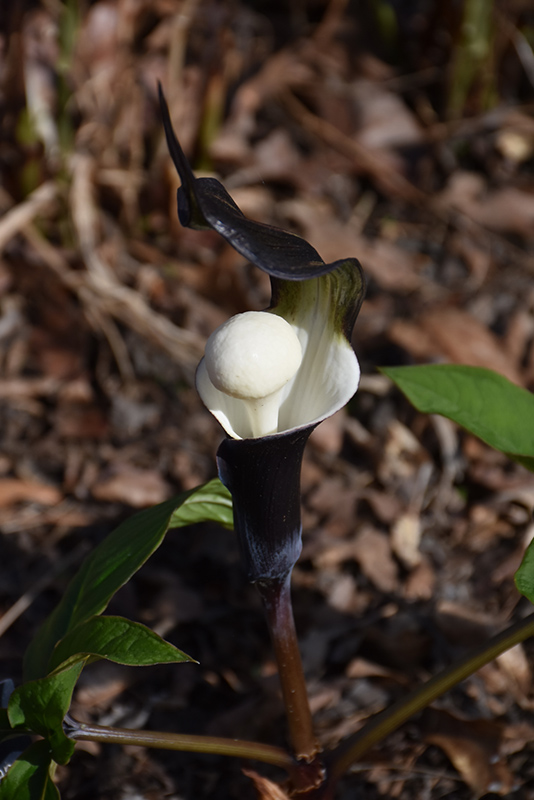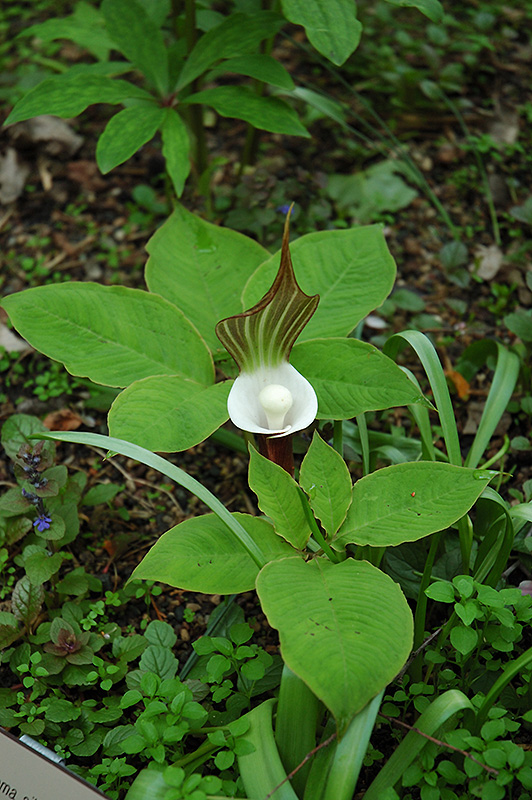Find Plants
Japanese Jack-In-The-Pulpit*
Arisaema sikokianum
* This is a "special order" plant - contact store for details
Plant Height: 8 inches
Flower Height: 16 inches
Spread: 12 inches
Sunlight:
![]()
![]()
Hardiness Zone: 2
Other Names: Dragon Root
Description:
A unique and unusual perennial that prefers shaded and moist areas; before its dormancy in late summer, this selection produces a stunning bloom with smoky purple and white spathe
Ornamental Features
Japanese Jack-In-The-Pulpit features solitary white trumpet-shaped flowers with burgundy bracts at the ends of the stems in early summer. Its pointy leaves remain green in color throughout the season.
Landscape Attributes
Japanese Jack-In-The-Pulpit is an open herbaceous perennial with an upright spreading habit of growth. Its medium texture blends into the garden, but can always be balanced by a couple of finer or coarser plants for an effective composition.
This is a relatively low maintenance plant, and usually looks its best without pruning, although it will tolerate pruning. Deer don't particularly care for this plant and will usually leave it alone in favor of tastier treats. It has no significant negative characteristics.
Japanese Jack-In-The-Pulpit is recommended for the following landscape applications;
- General Garden Use
Planting & Growing
Japanese Jack-In-The-Pulpit will grow to be about 8 inches tall at maturity extending to 16 inches tall with the flowers, with a spread of 12 inches. It grows at a slow rate, and under ideal conditions can be expected to live for approximately 5 years. As an herbaceous perennial, this plant will usually die back to the crown each winter, and will regrow from the base each spring. Be careful not to disturb the crown in late winter when it may not be readily seen!
This plant does best in partial shade to shade. It requires an evenly moist well-drained soil for optimal growth, but will die in standing water. It is very fussy about its soil conditions and must have rich, acidic soils to ensure success, and is subject to chlorosis (yellowing) of the foliage in alkaline soils. It is quite intolerant of urban pollution, therefore inner city or urban streetside plantings are best avoided, and will benefit from being planted in a relatively sheltered location. Consider applying a thick mulch around the root zone in both summer and winter to conserve soil moisture and protect it in exposed locations or colder microclimates. This species is not originally from North America, and parts of it are known to be toxic to humans and animals, so care should be exercised in planting it around children and pets.
* This is a "special order" plant - contact store for details
Disclaimer - This Plant Finder tool is an online resource representing many of the varieties that we carry over the course of the season, and is intended for informational purposes only. Inventory varies seasonally, so we cannot guarantee that every plant will be in stock at all times - please contact the store directly for availability. It does not include our entire inventory of plants, so be sure to visit our store to see varieties that may not be represented on this list.


